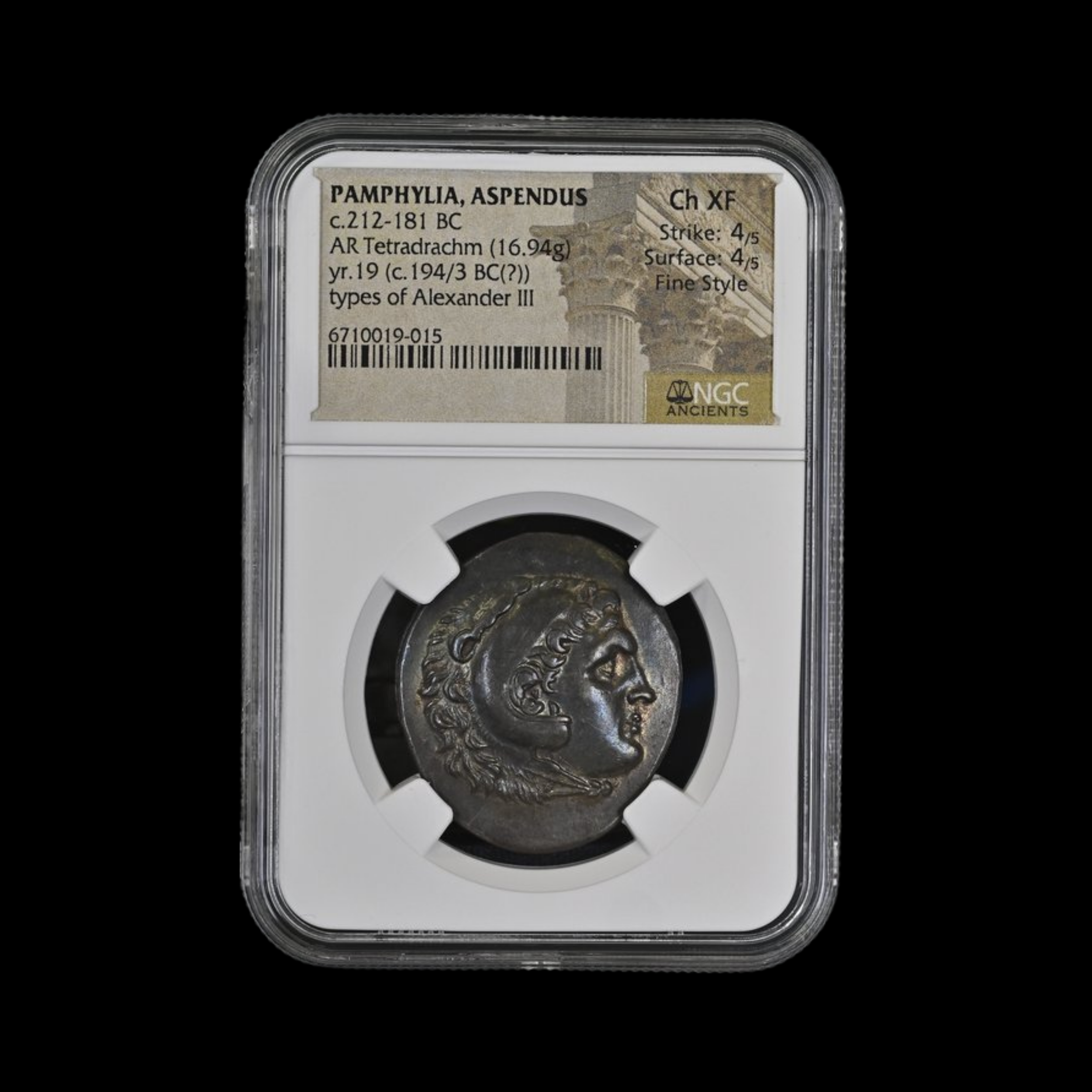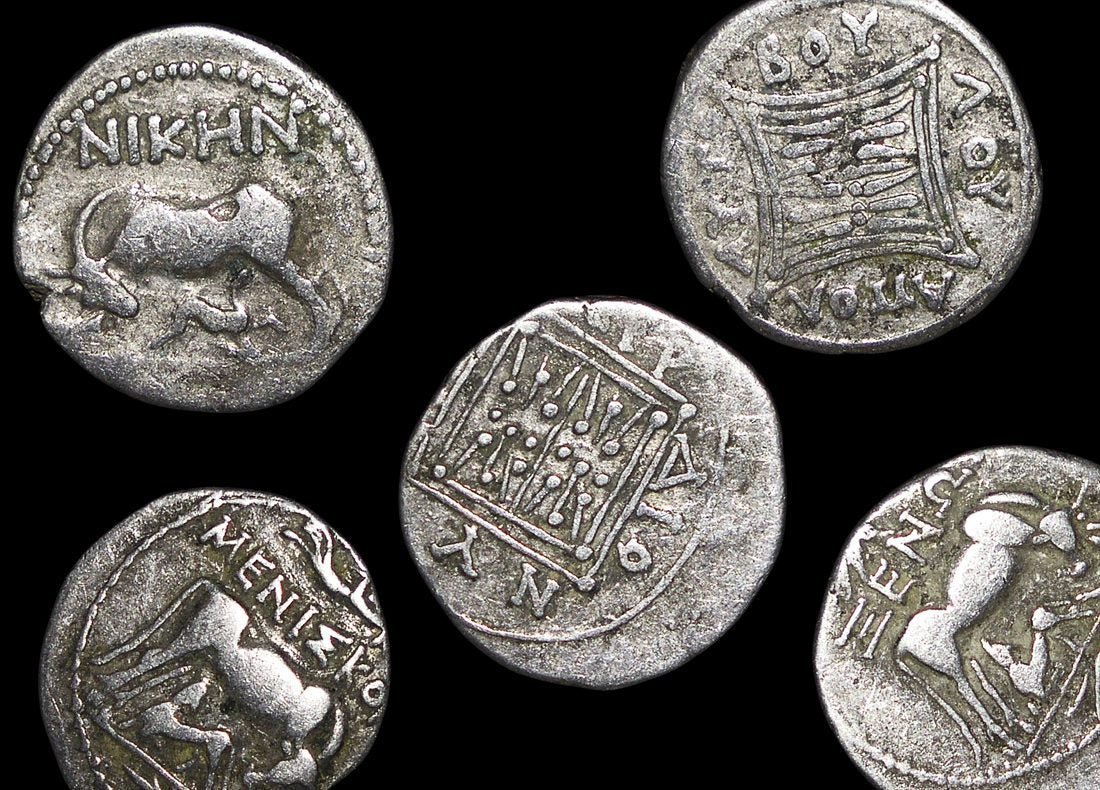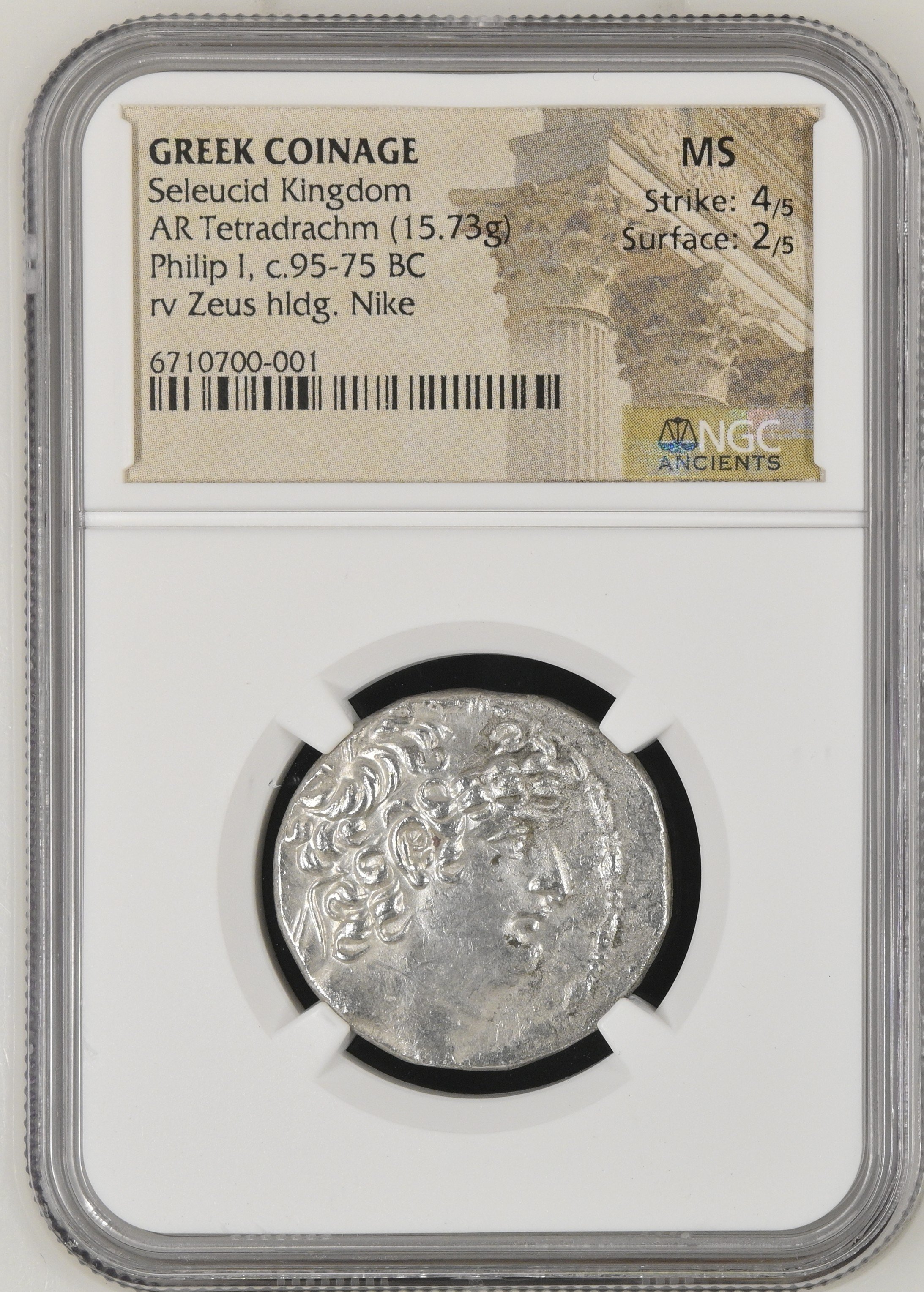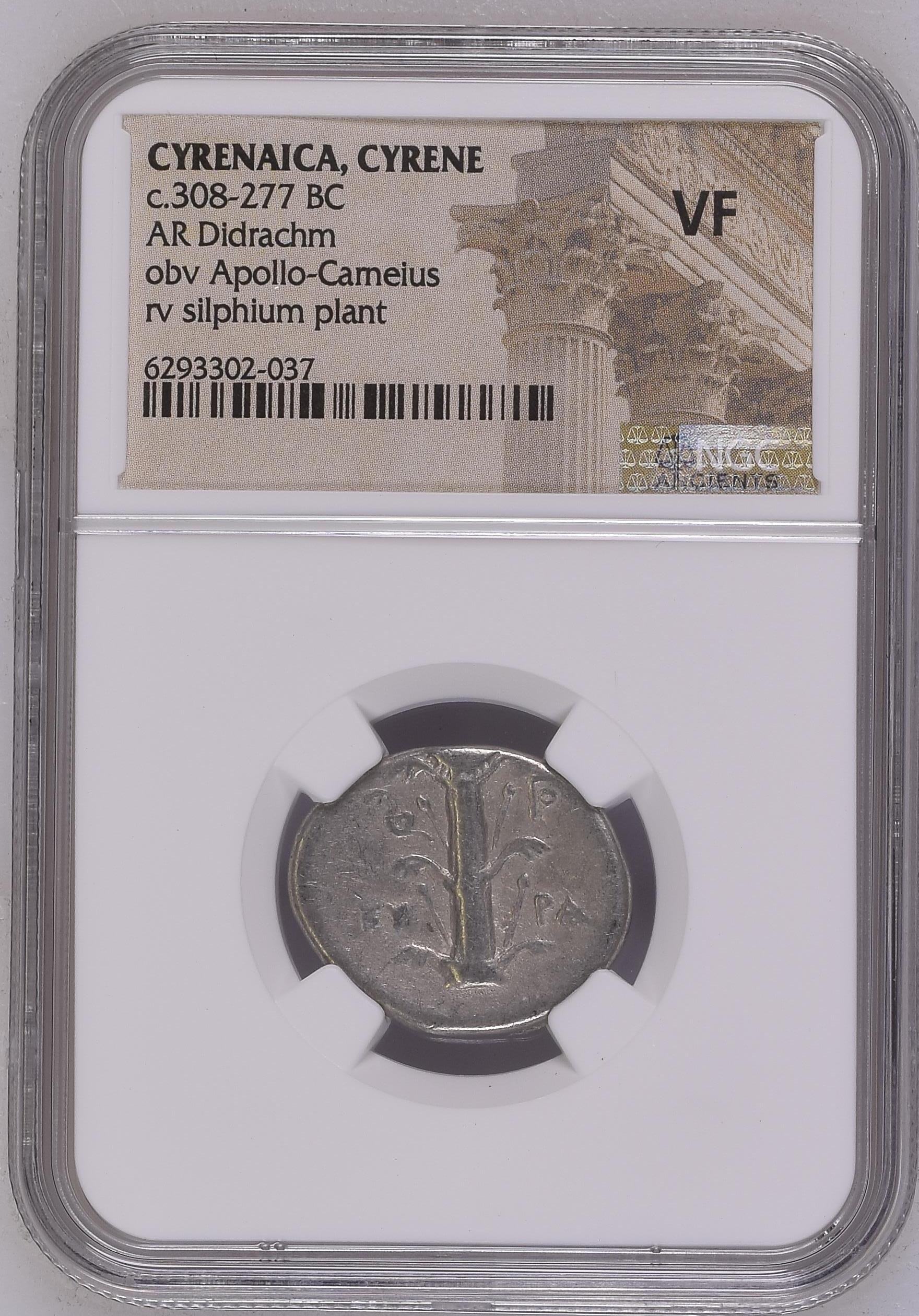 Image 1 of 2
Image 1 of 2

 Image 2 of 2
Image 2 of 2



Pamphylian Silver Tetradrachm (Large Silver Coin) from Aspendus with Alexander the Great's Imagery (about 2215 years ago)
This large silver coin (tetradrachm, worth four drachms) was struck around 194/3 BC (Year 19) in Aspendus, a city in Pamphylia (modern-day southern Turkey), featuring the traditional designs associated with Alexander III (the Great).
Front Side: Likely features the head of Alexander the Great or Heracles wearing a lion skin
Back Side: Probably depicts Zeus seated on a throne holding an eagle and scepter (traditional Alexander-type reverse)
Technical Details: Material: Silver (AR) Denomination: Tetradrachm (large silver coin equivalent to four drachms) Date Range: c. 212-181 BC Certification: NGC Grade Ch XF (Choice Extremely Fine) with Strike: 4/5, Surface: 4/5, Fine Style
Historical Significance: This coin demonstrates the enduring legacy of Alexander the Great's coinage designs, which continued to be used by cities throughout the Hellenistic world long after his death in 323 BC. Aspendus in Pamphylia adopted these widely recognized designs to ensure their currency would be accepted in international trade. The "Fine Style" designation indicates exceptional artistic quality in the engraving. These posthumous Alexander-type tetradrachms were among the most important international trade currencies of the ancient Mediterranean world, facilitating commerce across political boundaries.
This large silver coin (tetradrachm, worth four drachms) was struck around 194/3 BC (Year 19) in Aspendus, a city in Pamphylia (modern-day southern Turkey), featuring the traditional designs associated with Alexander III (the Great).
Front Side: Likely features the head of Alexander the Great or Heracles wearing a lion skin
Back Side: Probably depicts Zeus seated on a throne holding an eagle and scepter (traditional Alexander-type reverse)
Technical Details: Material: Silver (AR) Denomination: Tetradrachm (large silver coin equivalent to four drachms) Date Range: c. 212-181 BC Certification: NGC Grade Ch XF (Choice Extremely Fine) with Strike: 4/5, Surface: 4/5, Fine Style
Historical Significance: This coin demonstrates the enduring legacy of Alexander the Great's coinage designs, which continued to be used by cities throughout the Hellenistic world long after his death in 323 BC. Aspendus in Pamphylia adopted these widely recognized designs to ensure their currency would be accepted in international trade. The "Fine Style" designation indicates exceptional artistic quality in the engraving. These posthumous Alexander-type tetradrachms were among the most important international trade currencies of the ancient Mediterranean world, facilitating commerce across political boundaries.
This large silver coin (tetradrachm, worth four drachms) was struck around 194/3 BC (Year 19) in Aspendus, a city in Pamphylia (modern-day southern Turkey), featuring the traditional designs associated with Alexander III (the Great).
Front Side: Likely features the head of Alexander the Great or Heracles wearing a lion skin
Back Side: Probably depicts Zeus seated on a throne holding an eagle and scepter (traditional Alexander-type reverse)
Technical Details: Material: Silver (AR) Denomination: Tetradrachm (large silver coin equivalent to four drachms) Date Range: c. 212-181 BC Certification: NGC Grade Ch XF (Choice Extremely Fine) with Strike: 4/5, Surface: 4/5, Fine Style
Historical Significance: This coin demonstrates the enduring legacy of Alexander the Great's coinage designs, which continued to be used by cities throughout the Hellenistic world long after his death in 323 BC. Aspendus in Pamphylia adopted these widely recognized designs to ensure their currency would be accepted in international trade. The "Fine Style" designation indicates exceptional artistic quality in the engraving. These posthumous Alexander-type tetradrachms were among the most important international trade currencies of the ancient Mediterranean world, facilitating commerce across political boundaries.
Alexander III of Macedon (Ancient Greek: Ἀλέξανδρος, romanized: Aléxandros; 20/21 July 356 BC – 10/11 June 323 BC), most commonly known as Alexander the Great,[c] was a king of the ancient Greek kingdom of Macedon.[d] He succeeded his father Philip II to the throne in 336 BC at the age of 20 and spent most of his ruling years conducting a lengthy military campaign throughout Western Asia, Central Asia, parts of South Asia, and Egypt. By the age of 30, he had created one of the largest empires in history, stretching from Greece to northwestern India.[1] He was undefeated in battle and is widely considered to be one of history's greatest and most successful military commanders.[2][3][4]
Until the age of 16, Alexander was tutored by Aristotle. In 335 BC, shortly after his assumption of kingship over Macedon, he campaigned in the Balkans and reasserted control over Thrace and parts of Illyria before marching on the city of Thebes, which was subsequently destroyed in battle. Alexander then led the League of Corinth, and used his authority to launch the pan-Hellenic project envisaged by his father, assuming leadership over all Greeks in their conquest of Persia.[5][6]
You Might Also Like









